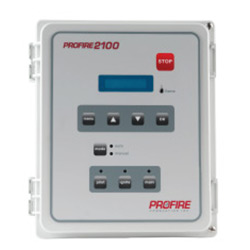Nov . 20, 2024 18:36 Back to list
force in hydraulic cylinder product
Understanding Force in Hydraulic Cylinders
Hydraulic cylinders are crucial components in various machinery and systems, widely employed in industries such as construction, manufacturing, and automotive. They convert hydraulic energy into mechanical energy, allowing for precise control of movement and force. The force generated by a hydraulic cylinder is fundamental to its operation, and understanding it is key for effective design and application.
Basic Principles of Hydraulic Cylinders
At their core, hydraulic cylinders operate based on Pascal's law, which states that a change in pressure applied to a confined fluid is transmitted undiminished throughout the fluid. Hydraulic cylinders typically consist of a cylinder barrel, a piston, and two end caps. The fluid, usually hydraulic oil, is pumped into the cylinder, causing the piston to move. The force exerted by the piston is calculated using the formula
\[ \text{Force} = \text{Pressure} \times \text{Area} \]
Where
- Force (F) is measured in pounds or Newtons. - Pressure (P) is measured in psi (pounds per square inch) or pascals. - Area (A) is the cross-sectional area of the piston in square inches or square meters.
Calculating Force in Hydraulic Cylinders
To determine the force output of a hydraulic cylinder, one must first understand the pressure of the hydraulic fluid and the area of the piston. The piston’s area can be calculated using the diameter of the piston with the formula
\[ A = \pi \left(\frac{d}{2}\right)^2 \]
Where d is the diameter of the piston.
For example, if a hydraulic cylinder has a piston diameter of 4 inches and the hydraulic pressure is 2000 psi, the force can be calculated as follows
1. Calculate the area \[ A = \pi \left(\frac{4}{2}\right)^2 = \pi (2)^2 \approx 12.57 \, \text{square inches} \]
force in hydraulic cylinder product

2. Calculate the force \[ F = P \times A = 2000 \, \text{psi} \times 12.57 \, \text{in}^2 \approx 25140 \, \text{pounds} \]
This means that the hydraulic cylinder can exert a force of approximately 25,140 pounds when operating under these conditions.
Factors Affecting Force Output
While the basic equation for force calculation is straightforward, several factors can affect the force output in real-world applications
1. Fluid Dynamics The viscosity of the hydraulic fluid can influence the efficiency of force transfer. Thicker fluids can create resistance, leading to reduced force output.
2. Temperature As the temperature of the hydraulic fluid increases, it generally becomes less viscous. This change can either enhance or diminish the operating efficiency, depending on the system design.
3. Cylinder Design The design of the hydraulic cylinder, including the quality of seals and bearings, can affect frictional losses, thereby impacting the effective force output.
4. Load Conditions The actual load applied to the cylinder can vary, and the calculations need to consider the dynamic forces encountered during the operation.
Applications of Force in Hydraulic Systems
The force generated by hydraulic cylinders is used in a myriad of applications, from lifting heavy machinery and operating CNC machines to controlling vehicle components. For instance, in construction equipment like excavators, the ability to generate substantial force allows for precise digging and lifting operations.
Conclusion
Understanding the force generated by hydraulic cylinders is essential for anyone involved in design, maintenance, or operation of hydraulic systems. By applying the principles of fluid mechanics and considering various influencing factors, engineers and technicians can enhance the efficiency and effectiveness of hydraulic applications, ensuring safer and more productive operations in diverse industrial settings. As technology evolves, ongoing research will continue to optimize hydraulic systems, paving the way for innovations that harness this powerful force even more effectively.
-
Premium Set of 50/60-45-290 471 Parts | High Performance
NewsAug.24,2025
-
Efficient & Reliable Double Acting Power Unit | Hydraulic Solutions
NewsAug.23,2025
-
1.5 Ton Turbocharged Cylinder 80/95-40/60-35-124 | High Performance
NewsAug.22,2025
-
High-Performance Fork Lift Hydraulic Power Units
NewsAug.21,2025
-
High-Quality Set of 50/60-45-290 471 - Precision Parts
NewsAug.19,2025
-
1.5 Ton Lifting Cylinder-Hebei Shenghan|Heavy-Duty Lifting, Precision Engineering
NewsAug.18,2025
